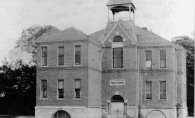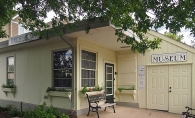Many years ago, one of the first pioneer families to settle near Lake Minnetonka often had an unexpected guest for dinner, according to a tale passed down for generations. It was Dakotah leader Maripiya Okinajin, or He Who Stands in the Clouds, who would drop in for dinner at the settlement house of Warren Wakefield and his family. Wakefield was the editor of the local Wayzata newspaper for many years.
The intriguing tale is one example of the historical lore to be found in the archives of the West Hennepin History Center (WHHC) in Long Lake; the center was formerly known as the West Hennepin County Pioneer Association and Pioneer Museum. The museum, founded in August 1907 by a group of territorial pioneers, was recently rebranded.
The museum’s current board of directors voted to update the name because “in the 109 years since it was founded, it has grown to be so much more than that,” says WHHC president Nancy Ferrell Geng. “We wanted to better reflect what the museum is about today. We still have a large focus on the pioneer and territorial era, but we also have thousands of family files, business, school and church histories, and artifacts.”
The WHHC’s main facility is a former public school building in Long Lake. It also has two other facilities: the former Independence Town Hall, located west of Maple Plain, and the 1857 vintage Wolsfeld cabin, on the grounds of the Medina city offices.
The museum in Long Lake has four primary display rooms, upstairs in former classrooms: the Victorian room; the General Store room; the Textile room; and the Music room, along with a vintage 1900 classroom.
One of the museum’s most prized artifacts is the oldest watercraft in Minnesota: a dugout canoe discovered in North Arm Bay in 1934. The canoe is almost 1,000 years old. On its lower level, the museum has a research facility open to anyone who wants to use the archives for genealogical or historical research, as well as a picture gallery of early western Hennepin County pioneer families.
Many of the museum’s 18 board members are descendants of original European settlers, including Ferrell Geng. Board member Dan Stubbs’ great-great-grandparents were among some of the lake area’s first white settlers when they and their children arrived there from West Elkton, Ohio in 1856.
After the founding picnic in 1907, the pioneers group continued to meet each August. When the museum began, “there were no other historical societies in the area. The 26 families that founded it began to meet every August,” Ferrell Geng notes. At that point, the territorial pioneers were just beginning to collect artifacts. The museum has always been entirely funded by donations from members (there are currently about 425) and visitors.
In the mid 1950s, Avery Stubbs arranged to set up a historical display in the basement of Long Lake Bank, and the group started collecting historical materials. They later purchased the Long Lake School building for the current museum.
Dan Stubbs, who serves as the museum’s volunteer webmaster, says one of the most valuable resources the association provides is the ancestor family files. One important long-term project has been scanning the voluminous files into a searchable database for online access. Volunteers also answer requests for information and copies of photos, and give group tours.
Board member and past president Steve Kelley says visiting the history center is comparable to “a treasure hunt. There is so much to see, including scrapbooks, old files and journals, and quite a thick packet on the Kelleys,” who settled in the area back in the early 1900s. “Every time I go there I find new things.”









